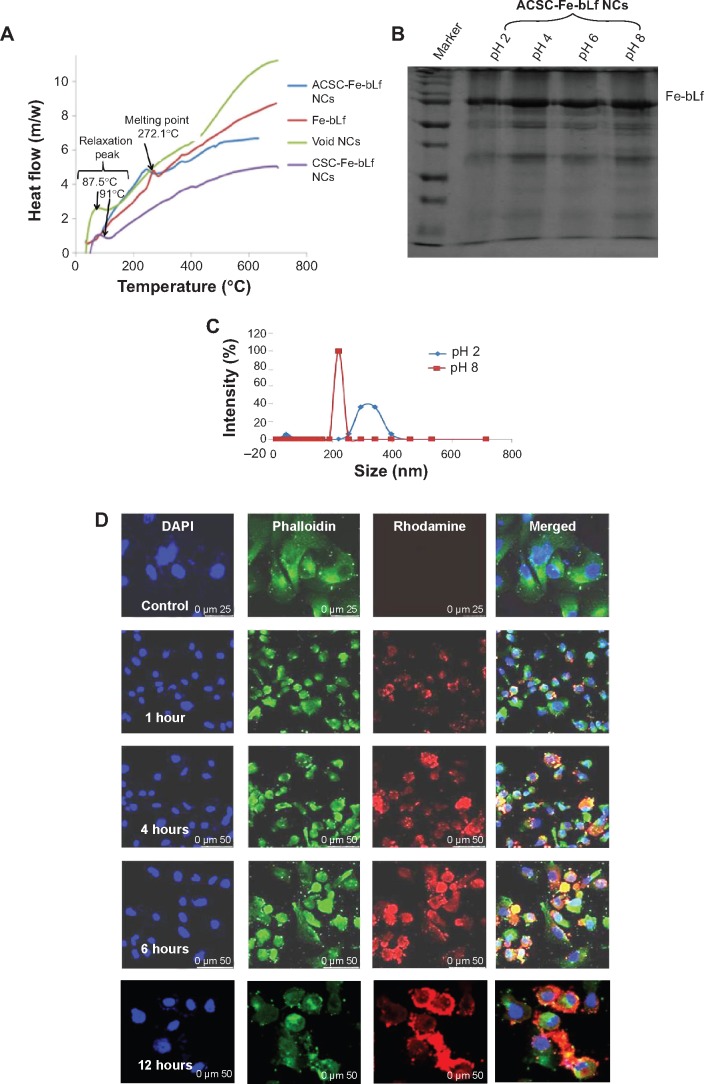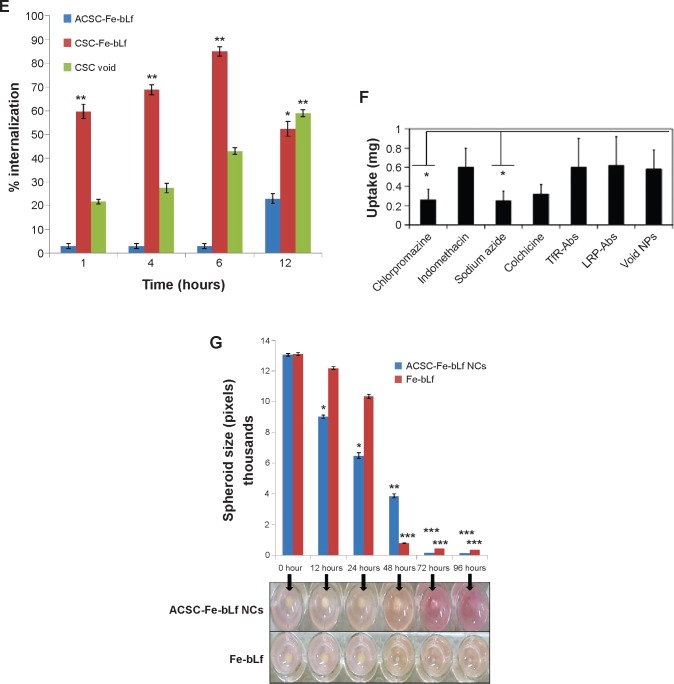Figure 2.
Stability and in vitro internalization efficacy of ceramic NCs.
Notes: (A) The differential scanning calorimetry curve showed modification in the melting point and the enthalpy of melting of NCs. (B) Sodium dodecyl sulfate–polyacrylamide gel electrophoresis showed the stability of NC-encapsulated Fe-bLf at varying pH (2–8). (C) It was observed using dynamic light scattering that alginate layer was shed off from ACSC-Fe-bLf NCs at alkaline pH to expose the CSC-Fe-bLf NCs. (D) Confocal microscopy confirmed successful internalization of rhodamine-labeled NCs in 1 hour, which was found to increase with time. (E) Flow cytometric analysis shows an increase in the internalization of rhodamine-loaded CSC-Fe-bLf NCs compared to void CSC NCs. (F) NCs enter the cells mainly via clathrin-mediated endocytosis and energy-mediated pathways. (G) 3.3 mg/mL of Fe-bLf loaded in NCs induced a 130-fold reduction in the size of multicellular tumor spheroids at 72 hours and 96 hours. Data represent mean ± standard error of the mean. Experiments were repeated three times independently with similar results. *P<0.05; **P<0.005; ***P≤0.0005.
Abbreviations: ACSC, alginate-enclosed chitosan-coated calcium phosphate; CSC, chitosan-coated calcium phosphate; DAPI, 4′,6-diamidino-2-phenylindole; Fe-bLf, iron-saturated bovine lactoferrin; LRP, low-density lipoprotein receptor; m/w, molecular weight; NCs, nanocapsules/nanocarriers; TfR, transferrin receptor.


